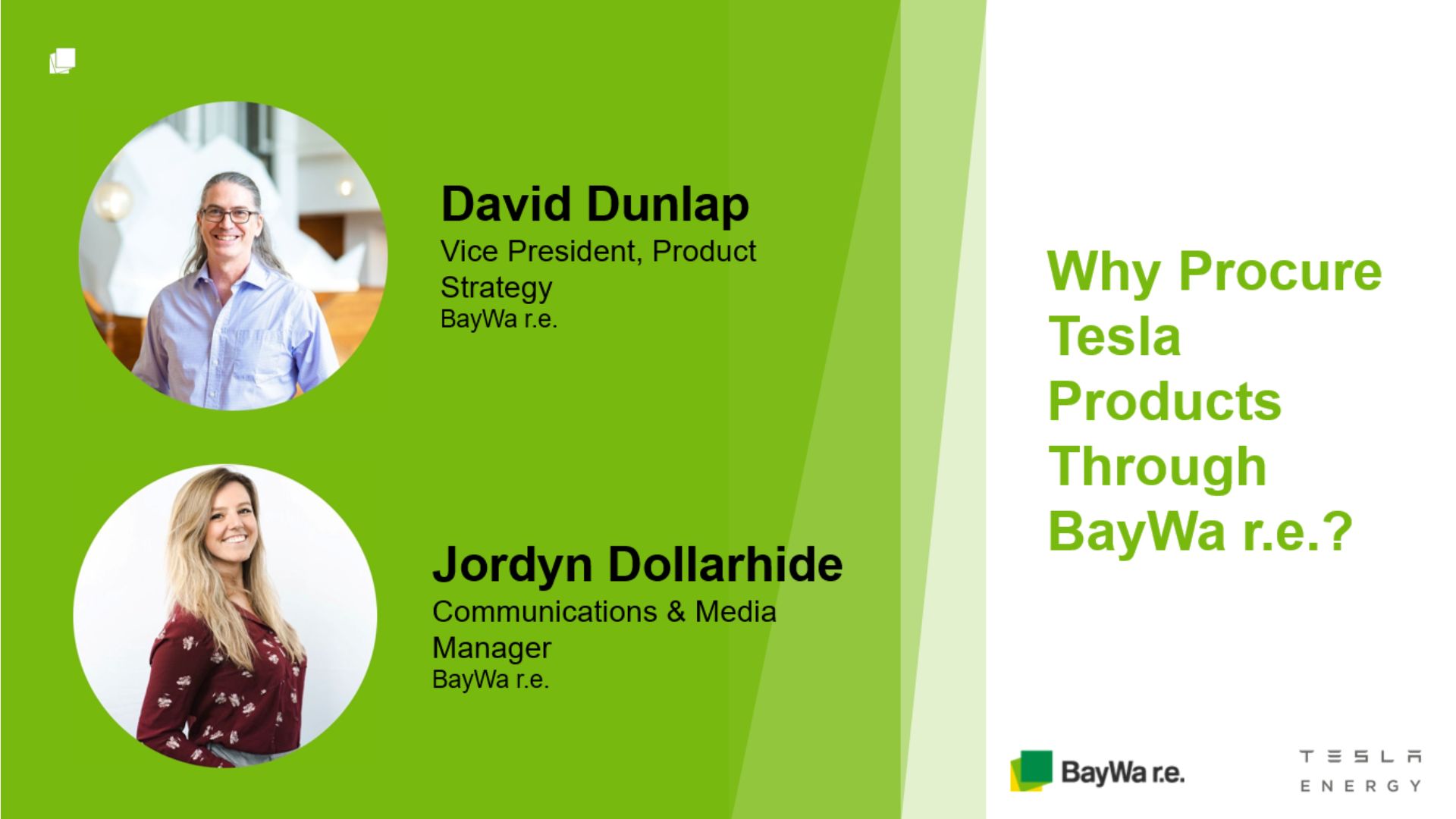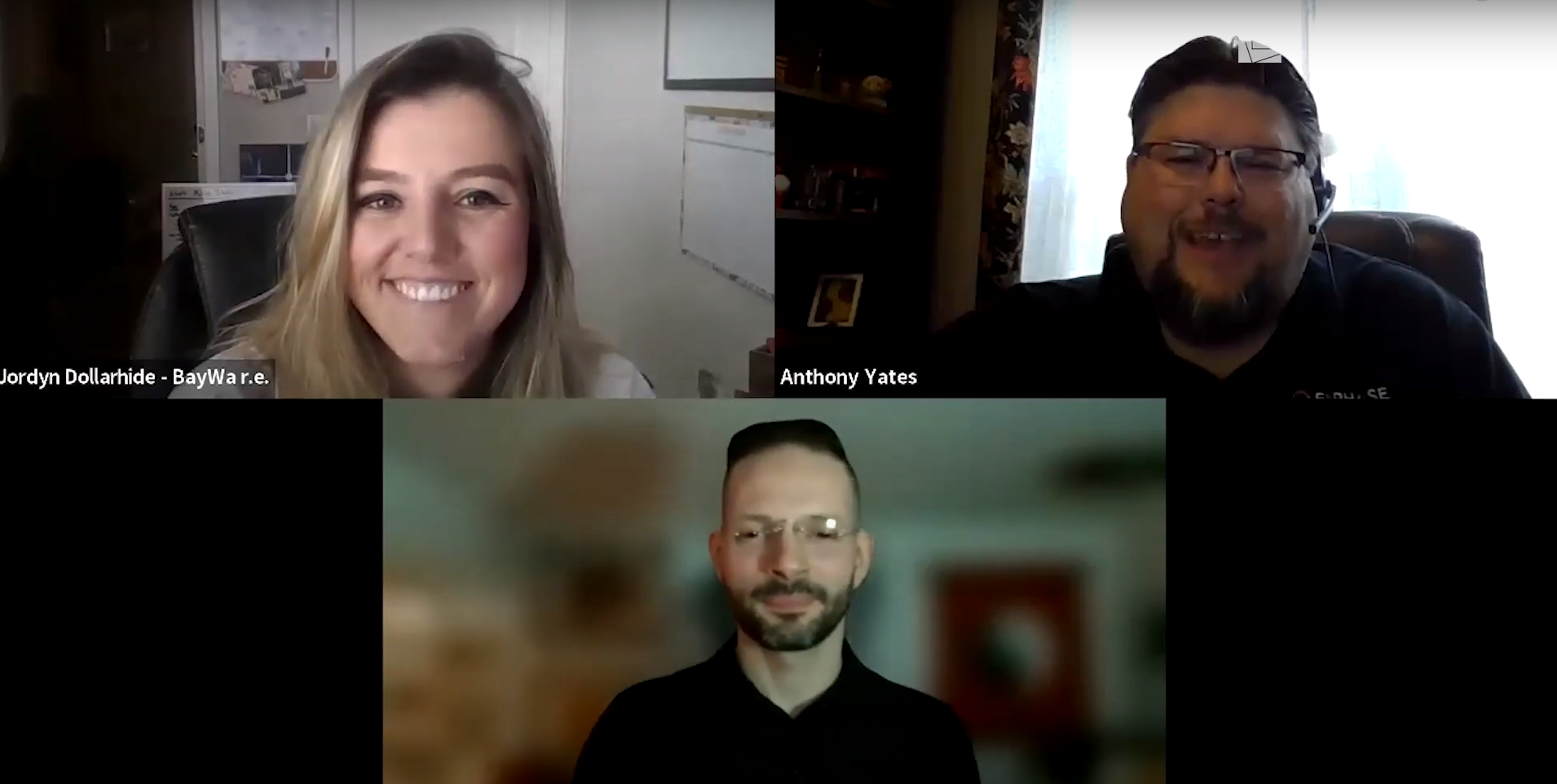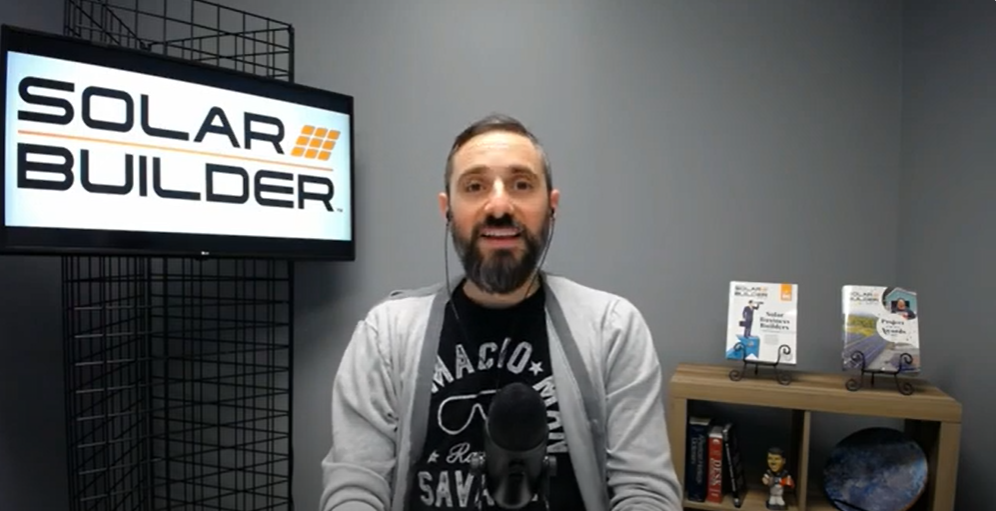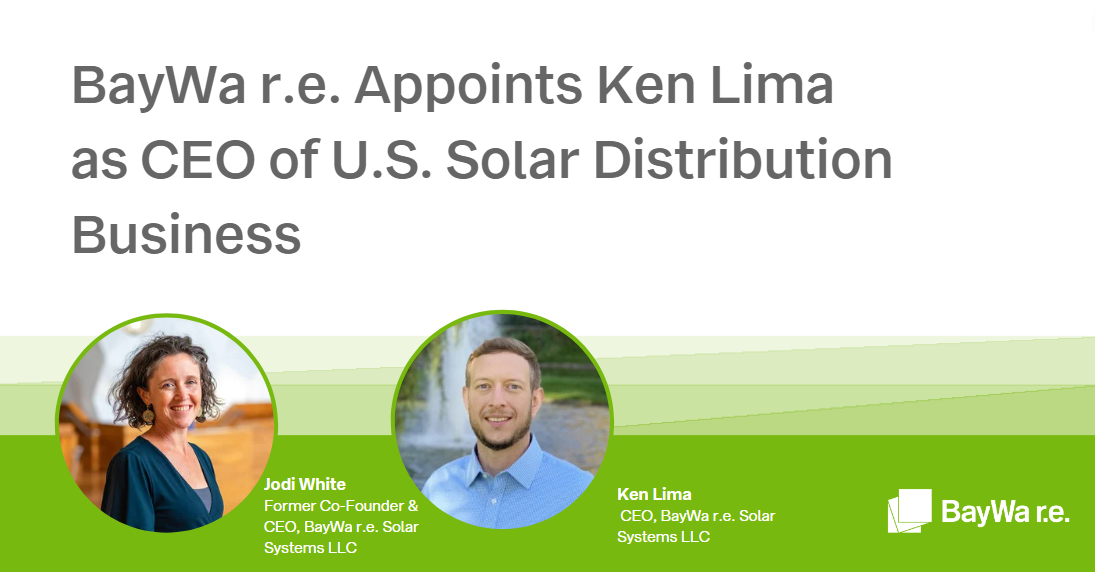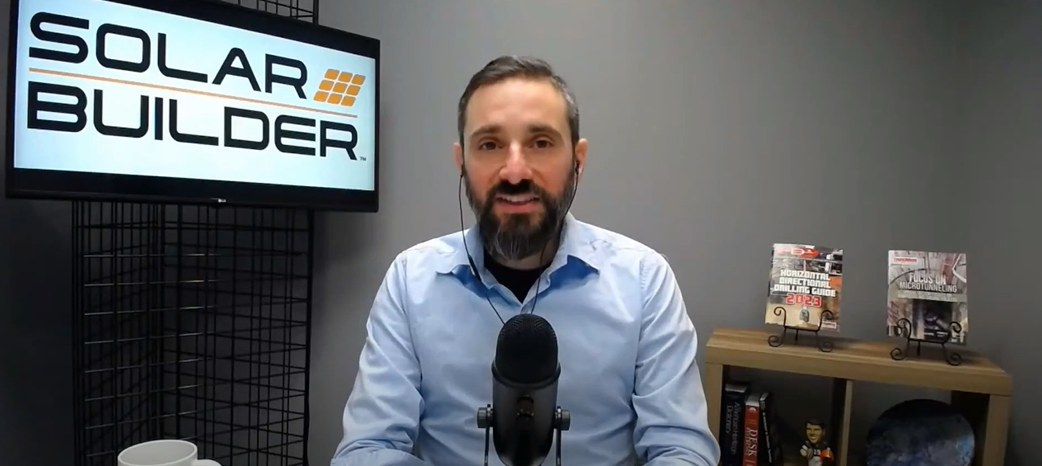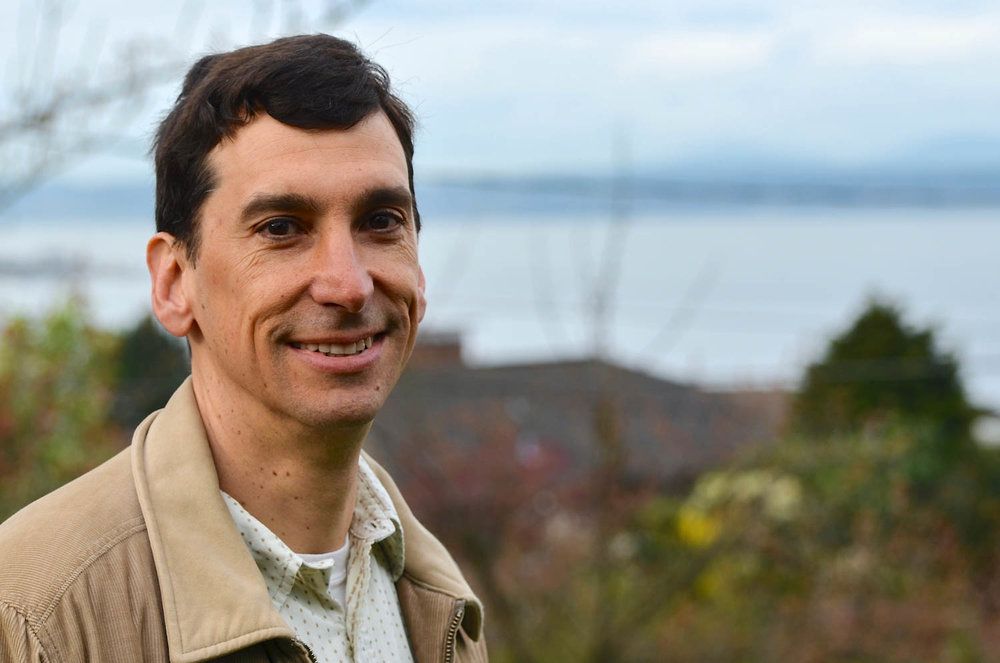 Paul Benson, Founder, Focused Energy
Paul Benson, Founder, Focused Energy
Paul’s been in the solar industry for over 20 years. He got his start with Dankoff Solar in the ’90s, working on solar pump applications in developing countries before taking over distribution activities in the Americas. After leaving Dankoff, he launched his own distribution company, Focused Energy, in 2008.
Early partnerships with Enphase, and a singular focus on efficiency and keeping lean, helped Focused Energy grow rapidly, catching the interest of BayWa r.e., who acquired it in 2011.
Paul now lives in Seattle and sits on the board of the BayWa r.e. US parent company. We see him frequently at BayWa r.e. summits and events, and he recently provided the material for what was some of the funniest dinner conversation I’ve ever been a part of. For details on this, please talk to Paul.
Tom: So, what I’m wondering is, what did you learn? What were you seeing? What influenced you to start Focused Energy?
Paul: Well, at that time, at the company I was working for—and across the board—distribution had really lost focus with what they were doing. They were in a large part competing with their customers. They were bringing on their own installation arms—their own commercial teams. So I think they really had lost their way. And I just saw an opportunity to really get back to basics and put the customer’s needs first. And bring a simplistic product line, and focused business model around giving the customer what they need to be successful. Instead of thinking of the customer as a tool to achieve your goals as a distribution company.
Tom: So what were some of the partnerships that you developed? Did you have partnerships in place already?
Paul: At that point I had been in the industry for 15 years, so I had relationships. But a lot of it was building new relationships and building off of what I had done prior. The goal wasn’t to pick up pieces from where I was and move them somewhere else. We really did start with a blank slate: which products to add, which markets to work in. Which customers we would approach.
Tom: So just to get more granular. Tell me about the first conversations with the customers. What was Focused [Energy] offering that they weren’t getting elsewhere?
Paul: [Laughs] Well, it wasn’t product, because we didn’t have anything unique! It was really a mindset in how we wanted to go to market and help them. We had competitive pricing because we had a good cost structure in the beginning. But the approach was not to be the cheapest, it was really to deliver the most value. It was a different conversation than other companies, where product was being forced into the customer’s warehouse based on the needs of the distributor. We were trying to deliver product that was wanted by the customer in a way that added value.
I used to say: product was how we put revenue on the books, but it was really the service underneath—in large part that we gave away for free—that helped us sell product.
Early with Enphase
Tom: And I know you have an early relationship with Enphase. Was that from the beginning of Focused Energy?
Paul: Enphase went to market about 6 months after Focused Energy was founded. So it’s not like we came out of the door with Enphase strapped to our side. They approached us. And initially, we thought it might be too risky. They were having a tough time getting distributors to sign up and commit to selling the product. There were a couple of reasons: this was now 2008, late 2008.
This is about 4 months—5 months after Lehman Brothers failed. So there were significant shocks in the economy. They didn’t want inventory, they didn’t want the risk of a new product. It was a tough time in the market.
So we initially had that same perspective. And shortly thereafter realized we had an opportunity to offer a unique product. We thought it was revolutionary in terms of what it could offer residential installers at the time. So we got on board. It just seemed like if it’s going to work, it going to work big. And if we get in early, it’s going to fit into our story and how we communicate with our customers. And it did help that none of the other distributors were interested in getting on board. So we got a lot of attention early on and created a lot of noise in the market.
Tom: But there’s a story behind that, right? Didn’t you place the first order without telling the partners?
Paul: I did, yeah. I had a meeting with Enphase, someone I had known for several years. We had dinner. Really interested in the product. But in the end I thought no, we shouldn’t do this. And I went in the next day and talked to the partners—and it was just the four of us in the company. And we talked about it, and they thought, yeah, it’s interesting but it’s too soon to get on board. And none of us saw ourselves leading with that. We thought we would follow and fill market demand that was already created.
But I couldn’t shake it. And I kept thinking about it all day. And that night I had another phone call with Enphase. And that lasted a couple of hours and I signed up then and there! I placed the POs from home that night! And it was thousands of units. And I went in the next day and told the team that “we’re going to do it.” They were a little surprised, because it seemed like quite a 180 from the day before! But after the initial shock wore off they got on board and the rest is history.
Tom: Yeah, so I want to talk about that a little bit more. What led you to make that decision? Because in hindsight it looks like such an obvious one. Enphase, at this point, is a global company. Was it purely instinct. What else were you thinking about?
Paul: You have to remember the time the decision was made. 2008, the winter of 2009. Those were low points in the economy. So anything that didn’t seem already proven was suspect.
But what I was hearing was a real similarity. There were a lot of parallels to Enphase as a company—and the Enphase product—fitting into the story we were telling about better partnerships, driving down costs, being efficient, part reduction, reducing complexity, simplifying the sales process, installation process, reducing operational complexity, reducing inventory, helping you be financially effective.
So there were pretty significant parallels between Enphase, their product, and what we were talking about in the market.
Tom: So you came at it with: “These folks have a similar focus and interests as we do, and that’s why it feels good.” And that’s what led you to take that risk.
Paul: Yeah. And it was a big risk. It really felt like—I won’t say that it would have ruined the company if that product, or that relationship, not panned out—but it would have significantly altered the trajectory of [Focused Energy] had it not worked out.
Tom: And it sounds like you were looking at the company and saying, “Enphase sounds like someone we can believe in, and we can get behind,” and that might help you sell it even better.
Paul: Yeah, and it wasn’t even as concrete as, “we can get behind this because we believe in it.” It really was: “these guys are saying the same thing were saying. They’re viewing the market in the same way: it’s too complex, we can simplify this.” The part count, design complexity, installation complexity, it simplified issues on the roof. It was the conversation we were trying to have. And it made that conversation even easier because they technically broke down many of the barriers we were facing with the current products that were available.
4 Core Principles
Tom: I’ve heard you talk before about some of the core principles that you started with at Focused Energy. Can you talk about those for a few minutes?
Paul: So I’ve thought a lot about that. And I know there’s been a lot of work around culture and values at the company. But at the time we didn’t spend a lot of time thinking about culture and values and writing them down. We spent more time talking about the business model, efficiency, productivity, process. Those were the four things we were talking about internally and externally. Later on, we spent more time really trying to formulate the values, but those became more concrete several years into the development of the company. In the beginning, it was: model, process, efficiency, productivity.
Tom: And that ’s what I’m really interested in in this conversation – it was efficiency that you were looking at? And what does that look like in the business model?
“There’s a breaking point that growth can deliver to anyone.”
Paul: Well it was higher sales per salesperson. It was more inventory turns. We really had to have financial effectiveness so we could be healthy from a financial point of view. So we could be healthy and deliver to our customers as a valued partner. We had our model. And it was really a limited SKU set. We were going to pick our partners wisely and go to market with force behind those products and convince people those were the right products for them. And if not, move on. But there was an incredible amount of discipline to not drift from that. It would have been really easy in some regards to grow our product offering faster because our customers wanted it—we wouldn’t have had significant challenges adding to it. But we managed to stay disciplined and didn’t drift off, and I think we’re better for it. It allowed us to grow rapidly and grow the business. Bring in new people. And not really needing a lot of money doing what we did, because we didn’t have to invest it in inventory that turned stagnant or obsolete.
Tom: So looking back at the beginning of the company – and I think BayWa r.e. [Solar Systems] had almost 100 million in sales last year? Is that right?
Paul: Yeah, a little bit over. They did a great job.
Tom: Yeah. So do you feel like those early principles still apply?
Paul: Yeah I do. And that’s what’s fascinating to me. Even though they weren’t formalized early on, they clearly lived on with a lot of new people; a lot of people from the beginning. But I think the culture is very consistent from the beginning. It’s adapted, the model’s changed a bit. All of those were necessary to address changes in the market, and our size in the market. But I think there’s an incredible amount of consistency from the beginning to now. And it’s really encouraging to me to see that it’s lived on. It’s become more formalized. Different people verbalize it in different ways, but there’s an incredible amount of consistency in how they view BayWa r.e. as an employer, as a company in the industry.
Tom: When you were at Focused Energy what did your daily routine look like?
Paul: In the beginning, I was the person in charge of keep the model consistent. It was really easy to drift. Buddy and Eric [co-founders of Focused Energy] were heavily focused on the sales side. They would constantly come and say, “I can do this sale if we had this product.” And that’s really enticing for an early stage company—to chase revenue. So my early focus was to say, “no.” So keeping discipline. Working with vendors. Finding products. Assessing market opportunities. It was a really exciting time. It felt like we were building something different.
Tom: What would you tell yourself, back when you were founding Focused Energy – knowing what you know now?
Paul: Well, I’m happy with the outcome! With greater risk we could have grown faster. But I’m not sure that would have panned out well. We had phenomenal growth, but you have to know your limits and your risk tolerance. And there’s a breaking point that growth can deliver to anyone. So I don’t think I would change anything.
Tom: And that seems to fall in line with the trajectory you talked about at the beginning: being small and efficient, offering only a few products. But if you look at where BayWa r.e. Solar Systems is now – we’re offering quite a few more products, but we have the resources to back that up. We have a lot more people. It sounds like “healthy growth” is a topic here?
Paul: Yeah, I think there’s a lot more to growth than just buying and selling a product. It needs to be done well. You owe that to the vendor you’re working with. And the trust that they have in you to represent their product appropriately to the customer you’re selling it to. And there’s a lot of pieces that need to come together. I don’t want to say that distribution is a complex business, but it needs to be thought out carefully – otherwise, you do everyone a disservice, up and downstream.
“There’s a lot more to growth than just buying and selling a product. ”
